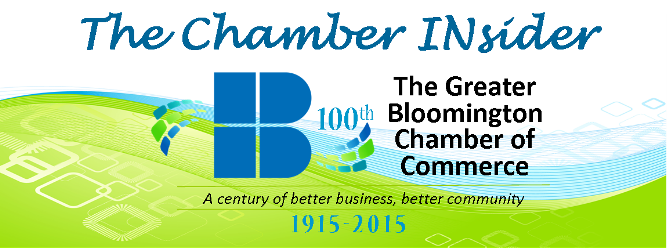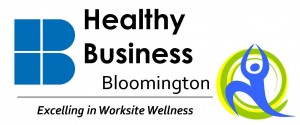Early this month, seven Chamber staff and two of our Board of Directors let out the loudest cheer when we heard our name announced as “Chamber of the Year”! Days before, we lost our dear friend and colleague Morgan Hutton who had served as The Chamber’s Director of Public Policy & Advocacy. Needless to say, the award raised our spirits and our heavy hearts. We all felt Morgan’s presence with us that evening.
Again we thank our members, volunteers and board of directors for the support given as we build better business and better community. It is because of your support and commitment that we were able to bring home this national title…Thank you!
Below is the official press release announcing our Chamber of the Year award:
Bloomington, IN – August 6, 2012 – The Greater Bloomington Chamber of Commerce was named 2012 Chamber of the Year by the American Chamber of Commerce Executives (ACCE) at the organization’s annual conference held in Louisville, K.Y., last week. The ACCE may recognize up to four chambers of commerce a year, one in each of the four annual revenue categories, for work in leading businesses and communities. The Greater Bloomington Chamber of Commerce competed in the $501,000–$999,998 total revenue category and was named the top chamber of its size in the United States and Canada.
The Chamber of the Year award involves an intense, multi-stage process. Chambers must first qualify to compete by completing the ACCE’s annual Chamber Operations Survey which is judged by the ACCE based on seven criteria regarding net income, assets, and partner retention dollars and accounts. Only the top ranked chambers are then invited to complete the formal application that provides a comprehensive view of the chamber’s success based on financial and partnership performance, as well as their communication and community programs. The last step in the process was the in-person interview which took place at the start of the conference and ultimately determined the final awardees in each category.
 “To be named Chamber of the Year validates the incredible work our board of directors, volunteers and staff accomplish on a daily basis and provides national recognition for the tremendous impact the Greater Bloomington Chamber of Commerce has on key community priorities such as education, transportation, healthcare and regional vitality,” said Christy Gillenwater, president & C.E.O. of The Greater Bloomington Chamber of Commerce. “We are grateful to our dedicated volunteers and members. We are extremely humbled to receive this honor as we recommit to continue to serve our stakeholders with excellence.”
“To be named Chamber of the Year validates the incredible work our board of directors, volunteers and staff accomplish on a daily basis and provides national recognition for the tremendous impact the Greater Bloomington Chamber of Commerce has on key community priorities such as education, transportation, healthcare and regional vitality,” said Christy Gillenwater, president & C.E.O. of The Greater Bloomington Chamber of Commerce. “We are grateful to our dedicated volunteers and members. We are extremely humbled to receive this honor as we recommit to continue to serve our stakeholders with excellence.”
Gillenwater accepted the award at the August 2 ACCE Awards event along with board chair, Jim Whitlatch of Bunger & Robertson Attorneys at Law. According to Whitlatch, it was “a proud moment for everyone associated with the Greater Bloomington Chamber of Commerce” as the prestigious award highlighted some of the organization’s key programs and services.
He explains, “The Chamber serves as a catalyst for consensus, helping to build agreement so that critical projects that will benefit business and the community are realized. To know that our work on I-69 and the S.R. 45/46 Bypass – along with the positive impact The Chamber’s Franklin Initiative has had on area graduation rates, were recognized at this level is so rewarding.” Also highlighted in The Chamber’s ACCE Chamber of the Year application were several key membership marketing and communication pieces.
In 2011, the Indiana Chamber Executives Association (ICEA) recognized the Greater Bloomington Chamber of Commerce as the Indiana Chamber of the Year. Like the ACCE Chamber of the Year award, this also recognizes organizational excellence in chambers of commerce and provides a unique benchmarking opportunity to assess organizational strength.
For more information about The Greater Bloomington Chamber of Commerce visit www.chamberbloomington.org or call 812.336.6381.






